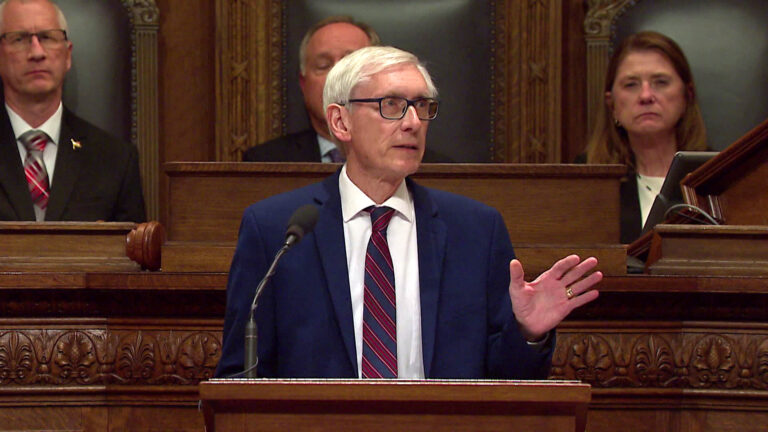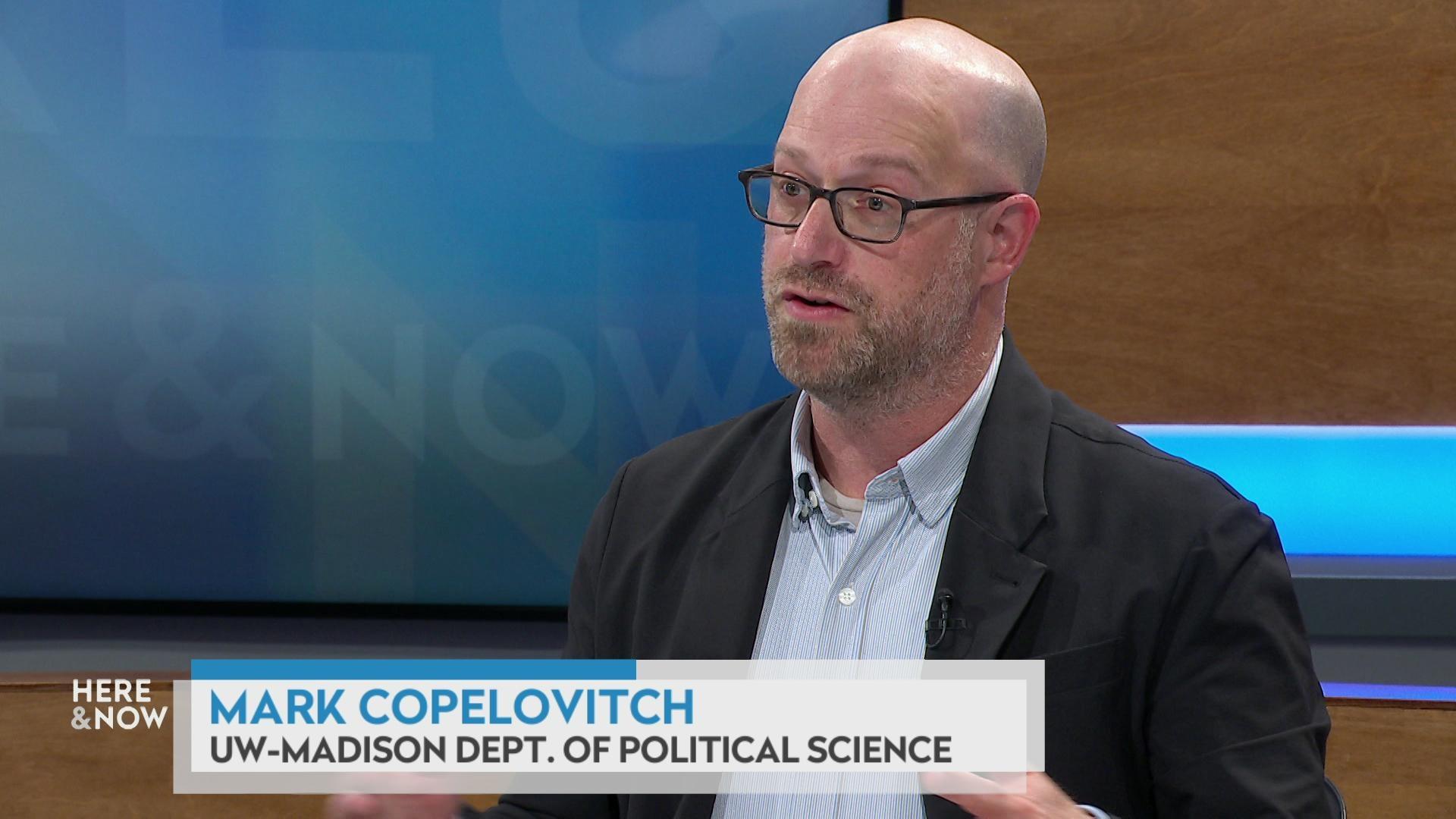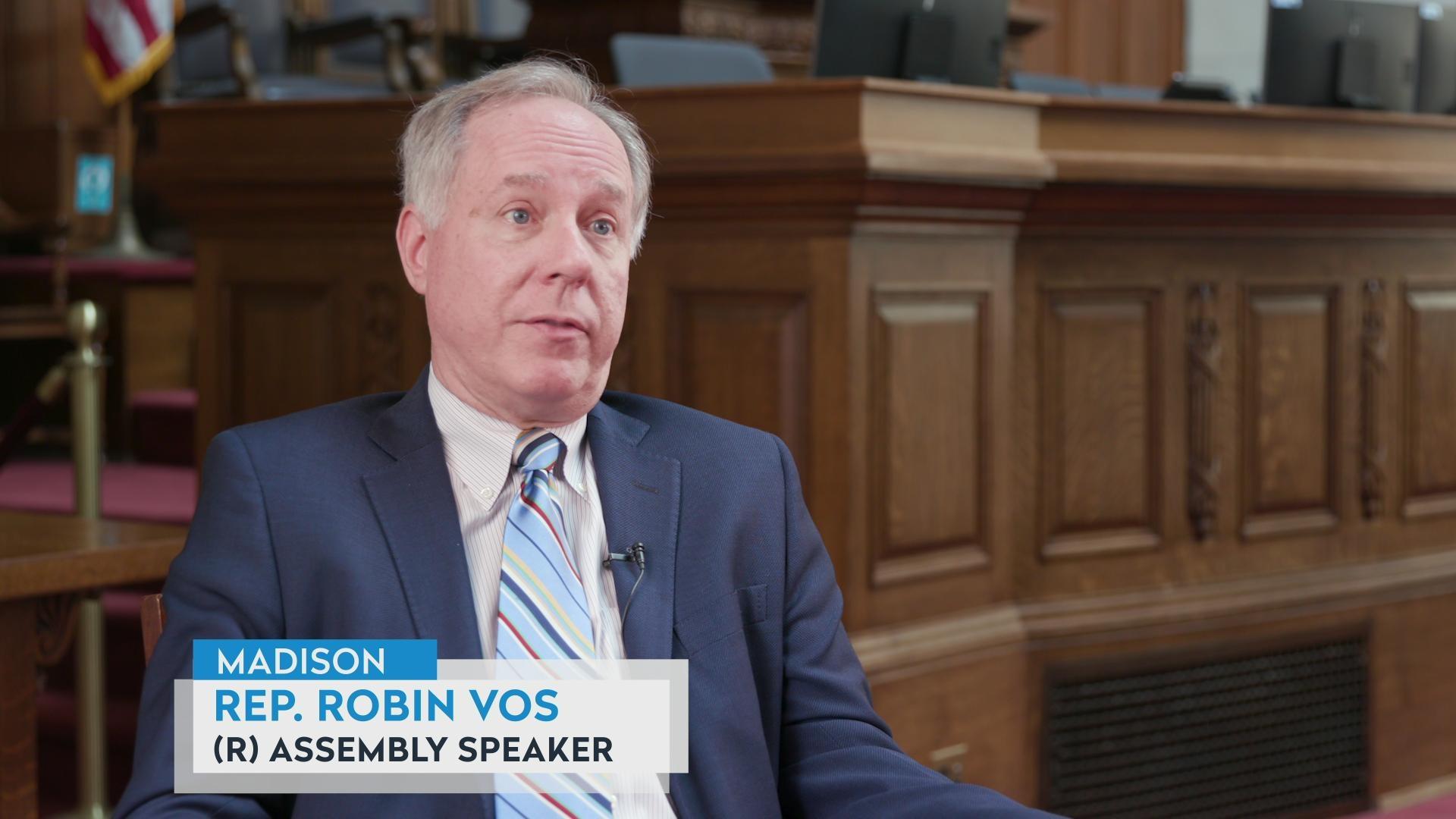Frederica Freyberg:
An anticipated expert analysis of new voting maps submitted to the Wisconsin Supreme Court is out. Research fellow at the Lubar Center for Public Policy at the Marquette Law School, John Johnson, joins us with his take. Thanks very much for being here.
John Johnson:
My pleasure.
Frederica Freyberg:
You analyzed the maps with the criteria set forth by the Supreme Court. Overall, of all the maps submitted by the Legislature, the governor, the law firms and others, which comports the most in your analysis?
John Johnson:
There’s not a clear winner across all the criteria. Some do better on some metrics than others.
Frederica Freyberg:
And do you think the court will accept any of these submitted maps?
John Johnson:
I’m not sure. I think most or all of them meet the minimum constitutional requirements: contiguity, equal populations, those kinds of things. But the court has to make judgment calls about which of these criteria it values most.
Frederica Freyberg:
And then it is true, am I correct, that they could decide, you know, none of them really are up to muster so we’re going to send this to these map-maker consultants. Is that the next step if it goes that way?
John Johnson:
I think that’s right. The opinion that the court released is not as clear as I would like it to be about the process that we’ll follow here, but I think that’s right, and these consultants they’ve hired have done that kind of work for other states.
Frederica Freyberg:
So what was the most important criteria under consideration and how did the maps stack up on that?
John Johnson:
Well, I think the most important criteria is equal population. That’s the whole point we do redistricting. All of the plans have a population deviation of less than 2%, so I could imagine the justices simply deciding that all of them were equally good on that metric. On the other hand, some of the plans have a deviation closer to 1% and some closer to 2. Lower is better on this metric. So we could also imagine the justices saying, well, we really prefer a plan to have the least population deviation, the most equal populations possible. The other, you know, sort of pass-fail is contiguity, which these plans all set out to achieve.
Frederica Freyberg:
So you commented that the Republican Legislature’s map stuck to the least change from the last least changed maps. How so?
John Johnson:
That’s right. So as you’ll recall, the reason the old maps were thrown out was because of many of the districts lacking contiguity, and the Legislative Republicans submitted a map where they essentially just made the fewest changes possible to resolve those contiguity issues. Sort of the minimal changes needed to meet the new constitutional requirements the court laid out. That ended up resulting in a lot of municipal and board splits, actually, because the reason why those old districts were not contiguous is because the municipalities themselves were not contiguous.
Frederica Freyberg:
So you described the Republicans as deliberately not playing ball with what the court requested. Is that akin to kind of thumbing their nose at the process?
John Johnson:
I’ll leave that to the listener to decide, but I think it’s clear that the Legislature was annoyed with what the court did and chose not to change the partisan impact of their map really at all, which is something that the court said they would explicitly consider.
Frederica Freyberg:
So UW Professor Barry Burden told us he thinks the number one effect will be shaking up incumbents, whereby new maps could put them in the same district. What are your observations about the number of proposed districts with multiple incumbents?
John Johnson:
So as far as I’m able to tell, the Legislative Republicans’ map wouldn’t place any incumbents from either party in the same district consistent with that least change approach we were talking about. All the other plans would do that, and particularly a lot of Republican incumbents would be placed in the same district. So as I’ve looked at this, I believe the plans submitted by the right petitioners would create 17 districts with no incumbents and then the plan submitted by Law Forward and the Senate Democrats would create 19 districts with no incumbents and then the plans submitted by the conservative law firm WILL would create 18 districts with no incumbents. And so if you’re drawing these districts with no incumbents, that means incumbents are being paired together elsewhere.
Frederica Freyberg:
Hmm. Well, also this week, a lawsuit was filed over maps for Wisconsin’s congressional districts. Are they flawed under the court’s new criteria?
John Johnson:
Not the contiguity issue. My understanding, I haven’t read the filing, but from the reporting I’ve read, that those lawyers are arguing that the least change approach is constitutionally flawed and asking the court to reject the old congressional map on those grounds.
Frederica Freyberg:
Lots of redistricting all over the place potentially. John Johnson, thanks very much.
John Johnson:
My pleasure.
Search Episodes

Donate to sign up. Activate and sign in to Passport. It's that easy to help PBS Wisconsin serve your community through media that educates, inspires, and entertains.
Make your membership gift today
Only for new users: Activate Passport using your code or email address
Already a member?
Look up my account
Need some help? Go to FAQ or visit PBS Passport Help
Need help accessing PBS Wisconsin anywhere?

Online Access | Platform & Device Access | Cable or Satellite Access | Over-The-Air Access
Visit Access Guide
Need help accessing PBS Wisconsin anywhere?

Visit Our
Live TV Access Guide
Online AccessPlatform & Device Access
Cable or Satellite Access
Over-The-Air Access
Visit Access Guide
 Passport
Passport



















Follow Us